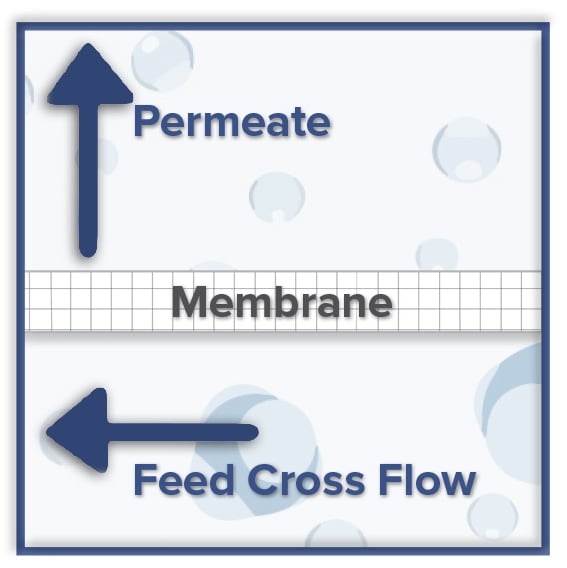
Q: What is Cross Flow Velocity?
A: Cross flow velocity (CFV) is the linear velocity of the flow tangential to the membrane surface and is reported in [m/sec] or [ft/sec]. CFV affects the hydrodynamic conditions in the cell, and as a result affects the fouling rate and formation of concentration polarization at membrane surface and is calculated by dividing the volumetric flow rate [lpm or gpm] in the flow channel by the cross sectional area [m2 or ft2] of the flow channel.
Q: How is CFV calculated in Sterlitech’s bench-scale test cells?
A: Example: Calculate CFV in the CF042 cell
- Flow channel cross sectional area: Channel depth x Channel width* = 0.23 x 3.92 cm
- Flow rate: 1 l/min = 1/60000 m3/s
- CVF = (1/60000 m3/s) / (0.0023 x 0.0392 m)= 0.18 m/s
*Contact us for more information about channel width in CF016 and Sepa cell
Q: How is CFV calculated when shims or feed spacers are inserted in the flow channel?
A: Adding shims to the flow channel reduces the depth of the channel. E.g. if the channel depth is 0.23 cm, inserting a shim with a thickness of 0.05 cm reduces the flow channel depth to 0.23 - (0.05) = 0.18 cm. CFV is then calculated by dividing the volumetric flow rate in the flow channel by the reduced cross sectional area of the channel. Adding feed spacers to the flow channel further reduces the channel cross sectional area. Effective cross sectional area depends on the spacer thickness and spacer’s percentage of open area. You can find commercially available Polypropylene and PTFE feed spacers with a wide range of thickness and percentage of open area on our website for Sepa CF, CF042, and CF016 test cells.


![Join Sterlitech at BIO 2024 [Booth #5558]: Exploring the Future of Biotechnology](https://www.sterlitech.com/media/magefan_blog/b4.jpeg)

